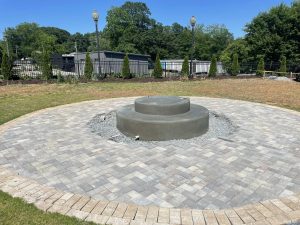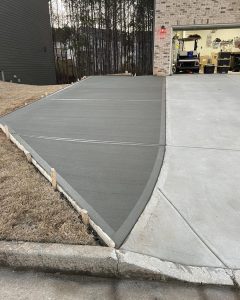Revitalize Your Concrete Surfaces: A Guide to Resurfacing Options
Concrete is known for its strength and durability, making it a popular choice for various surfaces like driveways, patios, and floors. However, over time, concrete can show signs of aging such as cracks, discoloration, and wear. Concrete resurfacing offers an effective and economical way to rejuvenate these surfaces. In this article, we’ll explore different concrete resurfacing options to help you choose the best one for your needs.

1. Concrete Overlay
A concrete overlay involves applying a thin layer of specialized concrete over the existing surface. This method is ideal for surfaces with minor damage or those needing a fresh appearance. Overlays come in various finishes, including smooth, textured, or patterned, and can be customized with colors or stamped designs to mimic natural materials.
Advantages:
- Cost-Effective: Generally less expensive than full replacement.
- Versatile: Available in different styles and colors to match your design preferences.
- Quick Application: Minimal downtime for surface use.
Disadvantages:
- Not Suitable for Major Damage: Best for minor surface issues rather than structural problems.
- Professional Application Needed: Requires skilled application for optimal results.

2. Stamped Concrete Overlay
Stamped concrete overlays involve adding a thin layer of concrete and then imprinting it with various patterns and textures. This technique is perfect for enhancing outdoor spaces with a luxurious look. Patterns like slate, cobblestone, and brick can give a high-end appearance to driveways, patios, and walkways.
Advantages:
- Visual Appeal: Provides a sophisticated look that can mimic expensive materials.
- Customizable: Available in numerous patterns and colors to suit different design themes.
- Protective Layer: Adds a durable layer over the existing concrete.
Disadvantages:
- Higher Cost: Generally more expensive due to intricate labor and materials.
- Maintenance Required: Needs regular sealing to maintain its appearance and durability.
3. Epoxy Coatings
Epoxy coatings are ideal for indoor concrete surfaces like basements and garages. This method involves using a resin and hardener to create a tough, glossy finish. Epoxy coatings are highly resistant to stains, chemicals, and abrasions, making them suitable for high-traffic areas.
Advantages:
- Durable: Offers excellent resistance to damage, including scratches and stains.
- Easy to Maintain: Simple to clean and maintain with regular sweeping and mopping.
- Aesthetic Choices: Available in various colors and finishes, including metallic and high-gloss options.
Disadvantages:
- Surface Preparation Needed: Requires thorough cleaning and prep for proper adhesion.
- Application Time: Involves multiple coats and curing time before use.
4. Polished Concrete
Polished concrete involves grinding the surface to achieve a smooth, shiny finish. This technique can enhance both new and old concrete surfaces. Polished concrete is commonly used in commercial spaces but is also becoming popular in residential settings.
Advantages:
- Low Maintenance: Requires minimal upkeep and is resistant to dirt and stains.
- Durable: Handles heavy foot traffic well and lasts a long time.
- Eco-Friendly: Reflective surface can help reduce lighting costs and enhance energy efficiency.
Disadvantages:
- Cost: Can be more expensive compared to other resurfacing methods.
- Extensive Preparation: Requires significant grinding and polishing, which can be noisy and time-consuming.
5. Concrete Resurfacer Products
Concrete resurfacers are pre-mixed materials applied over existing concrete to restore its appearance and functionality. These products usually come in powder form and are mixed with water before application. They are suitable for surfaces with moderate wear and minor damage.
Advantages:
- DIY-Friendly: Many products are easy for homeowners to use on their own.
- Cost-Effective: Generally cheaper than other resurfacing methods.
- Quick Application: Can be applied and dried relatively quickly.
Disadvantages:
- Surface Preparation Required: Proper cleaning and preparation are essential for adhesion and durability.
- Shorter Lifespan: May not be as durable as more robust resurfacing options.
Choosing the Right Resurfacing Method
When selecting a concrete resurfacing option, consider the condition of your existing concrete, your budget, and the desired outcome. Each method has unique benefits and potential drawbacks, so it’s important to assess your specific needs before deciding.
For minor cosmetic improvements and surface touch-ups, concrete overlays and resurfacers offer a budget-friendly solution. If you’re seeking a high-end appearance or increased durability, stamped concrete and epoxy coatings are excellent choices. For a sleek and modern finish, polished concrete might be the right option for you.
Consulting with a professional contractor can help you determine the best resurfacing method for your concrete surfaces. With the right choice, you can refresh the look and extend the lifespan of your concrete, enjoying a renewed surface for years to come.